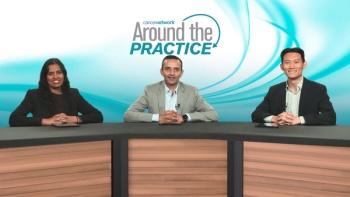Articles by Darren Pan, MD

Panelists discuss how UCSF Health has learned that successful integration of CAR T-cell therapy in multiple myeloma requires multidisciplinary collaboration, patient selection optimization, and management of toxicities. Future research includes exploring CAR T-cell therapy in earlier treatment lines and combining it with novel agents to enhance efficacy.

Panelists discuss collaborating with community practices on CAR T-cell therapy for multiple myeloma through joint clinical trials, patient education programs, and shared data initiatives. These partnerships enhance treatment access, foster innovation, and improve patient outcomes across diverse settings.

Panelists discuss how challenges in the CAR T referral process include delayed referrals, patient logistics, and managing expectations. One institution addresses these through streamlined communication, patient education, and clear referral guidelines. Community physicians should refer early on, ensure candidacy, and collaborate closely to optimize outcomes.

Panelists discuss how, a collaborative approach to co-managing and co-monitoring patients receiving CAR-TCAR T-cell therapy patients, ensuring continuity of care as they transition to community settings. We They employ detailed care plans, electronic health records integration, and regular follow-ups with community providers to facilitate seamless transitions.

Panelists discuss how CAR T-cell therapy involves engineering a patient’s T cells to target cancer cells. The process includes cell collection, genetic modification, expansion, and reinfusion and streamlines the process with integrated workflows. Bridging therapy is provided in-house to treat patients awaiting CAR-T infusion.

Panelists discuss how the typical CAR T-cell therapy referral process begins with community physicians contacting the treatment center. The patient undergoes a thorough evaluation, including medical history, eligibility criteria, and pretreatment assessments before final selection for therapy.

Panelists discuss how, when considering earlier lines of CAR T-cell therapy for relapsed/refractory multiple myeloma, key institutional factors include patient fitness/age, cytogenetic risk status, prior therapy response duration, and BCMA expression levels. Manufacturing timelines, financial considerations, and center-specific outcomes data also influence timing decisions. For patients receiving early-line CAR T therapy, subsequent treatment options typically focus on novel agent combinations or clinical trials exploring additional cellular therapies, with choices guided by response duration to CAR T and the patient’s individual disease characteristics and treatment goals.

Panelists discuss how, for second-line treatment of relapsed/refractory multiple myeloma (R/R MM), patients suitable for CAR T-cell (cilta-cel vs ide-cel) therapy typically have a poor prognosis with limited response to prior therapies. Institutional guidelines focus on factors such as prior lines of therapy, organ function, and cytogenetics. Non-medical factors, such as geographic access and financial constraints, also influence CAR T-cell therapy referral eligibility.




